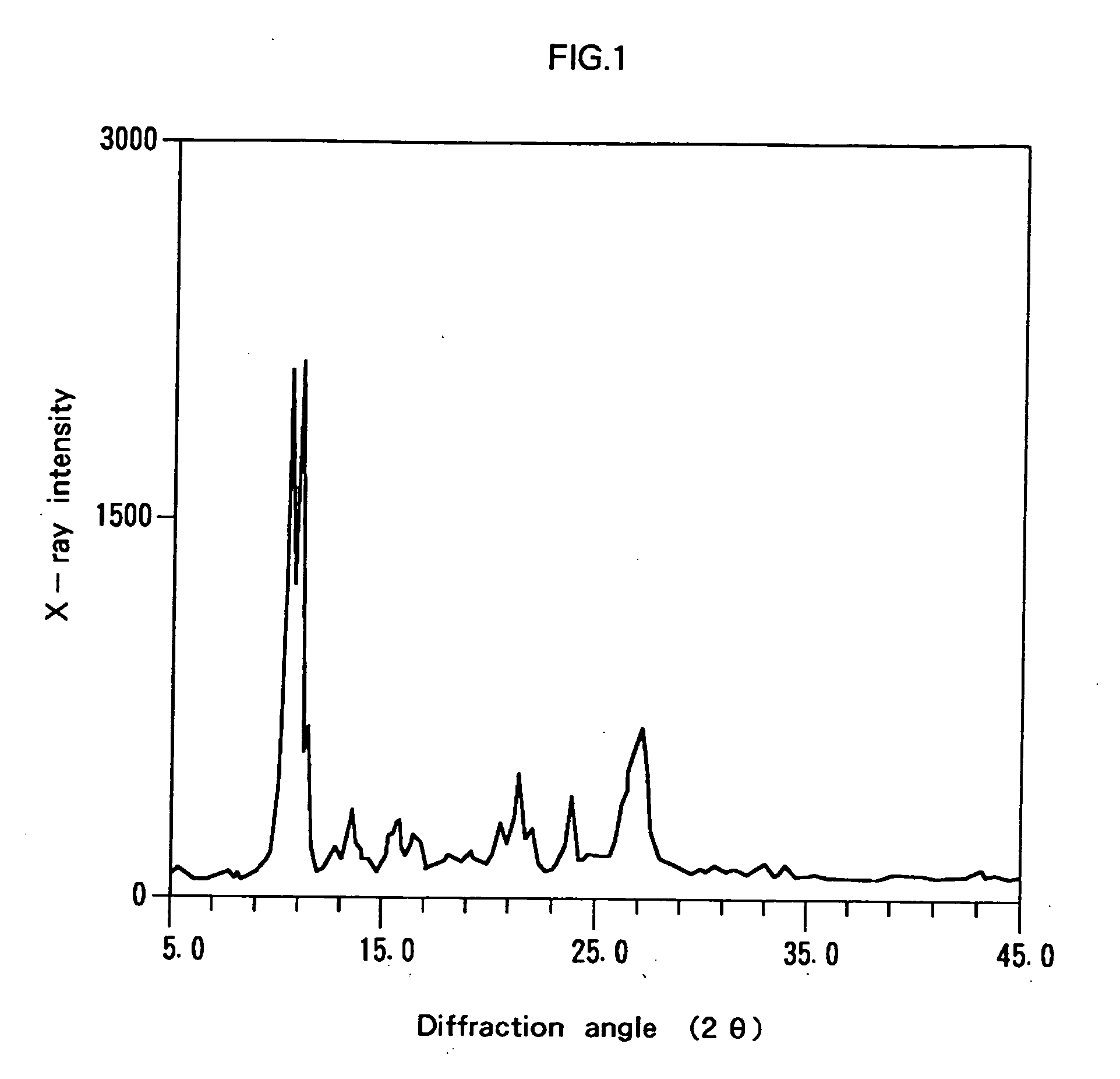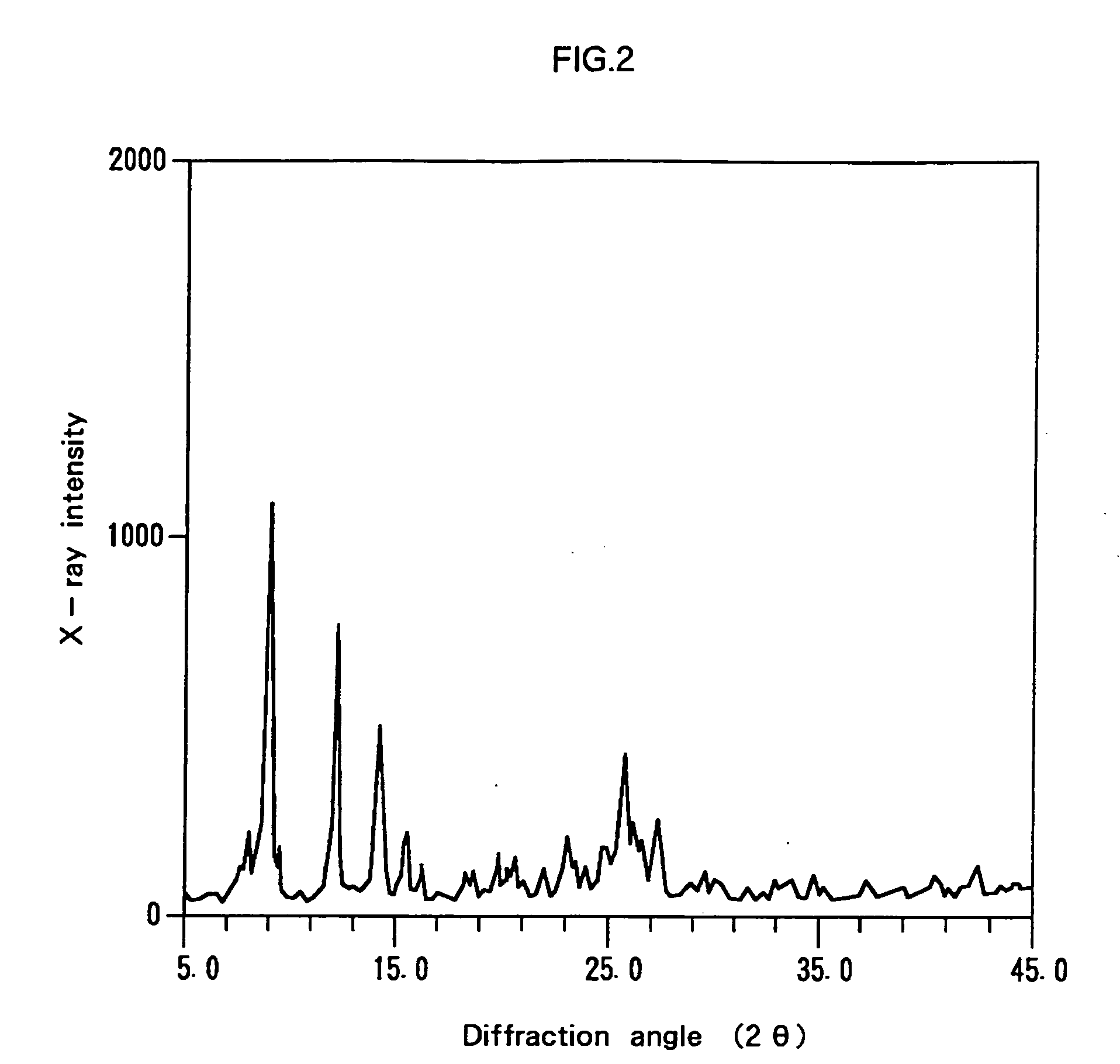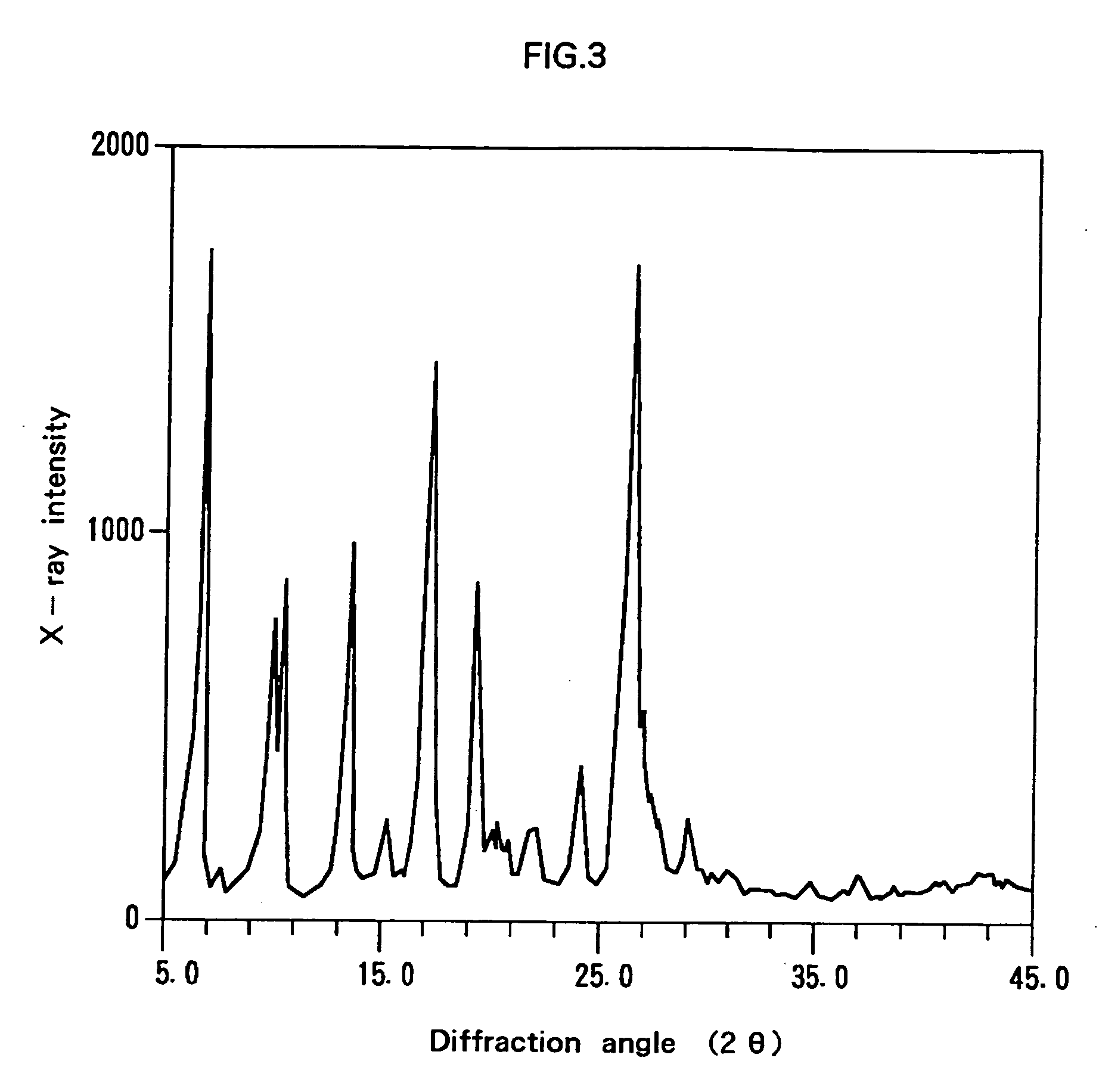Fluorescent colorant compositions, coloring process and colored articles
a technology of fluorescent colorants and compositions, applied in the field of image/information recording, fluorescent colorant compositions, can solve the problems of deprived of fluorescent properties, inferior light fastness, limitations imposed on the application field of fluorescent colorants, etc., and achieves high hiding properties, high color strength, and vivid hue
- Summary
- Abstract
- Description
- Claims
- Application Information
AI Technical Summary
Benefits of technology
Problems solved by technology
Method used
Image
Examples
synthesis example 1
Synthesis of Pigment 12 in Table 1
(1) Diazotization Reaction
[0061] Blue B base hydrochloride (13.4 parts) was added to o-dichlorobenzene (hereinafter abbreviated as “ODB”; 200 parts), followed by cooling. Hydrochloric acid (25 parts) was added to the mixture, and subsequent to vigorous stirring at room temperature for 1 hour, the resultant solution was cooled to 5° C. or lower. A solution of sodium nitrite (5.8 parts) in water (20 parts) was added dropwise to the solution over 30 minutes. While the temperature of the liquid mixture was maintained at 5° C. or lower, the liquid mixture was stirred further for 1.5 hours to provide it as a diazotization mixture.
(2) Preparation of a Coupler and a Coupling Reaction
[0062] Added to ODB (300 parts) were butyl 4-acetoacetamidobenzoate (24.4 parts), acetic acid (12 parts), and a solution of sodium acetate (11 parts) in methanol (30 parts), followed by stirring. The solution was provided as a coupler solution. The diazotization mixture wa...
example 1
Water-Based Inkjet Ink
[0066] Fluorescent Pigment 3 (150 parts) in Table 1, an aqueous solution (solid content: 40%; 187.5 parts) of a styrene-acrylic resin (the potassium salt of a 10 / 50 / 20 / 20 (weight ratio) quadripolymer of styrene / butyl acrylate / methacrylic acid / 2-hydroxyethyl methacrylate, polystyrene-converted weight average molecular weight as determined by GPC: 35,000), ethylene glycol (40 parts) and purified water (160 parts) were thoroughly mixed together to prepare a mill base. After the mill base was sufficiently dispersed by using a medium-containing, horizontal disperser, purified water (212.5 parts) was added to the dispersed mill base to obtain a pigment dispersion of 20% pigment content.
[0067] To the pigment dispersion (100 parts), ethylene glycol (51.0 parts), glycerin (33.0 parts), polyoxyethylene oleate (1 part), a surfactant (0.8 part), the same styrene-acrylic resin as described above (15 parts) and purified water (197 parts) were added. The resulting mixture w...
example 2
Oil-Based Inkjet Ink
[0071] Fluorescent Pigment 8 (2θ: 11°, h / w: 75; 100 parts) in Table 1 obtained in a similar manner as in Synthesis Example 1, an aqueous solution (solid content: 40%, 75 parts) of an acrylic resin (a 70 / 30 (weight ratio) copolymer of 2-ethylhexyl methacrylate / diethylaminoethyl methacrylate, polystyrene-converted weight average molecular weight as determined by GPC: 25,000) in “ISOPAR™ G” (product of Exxon Chemical Company), and “ISOPAR™ G” (492 parts) were thoroughly stirred and mixed together. The thus-prepared mill base was then sufficiently dispersed by using a medium-containing, horizontal disperser.
[0072] To the thus-obtained dispersion (100 parts), polyethylene glycol monolauryl ether (3 parts) and “ISOPAR™ G” (197 parts) were added. The resulting mixture was thoroughly stirred to prepare an ink. The ink was then filtered through a 5-μm membrane filter to obtain a fluorescent pigment ink.
[0073] The fluorescent pigment ink obtained as described above was ...
PUM
| Property | Measurement | Unit |
|---|---|---|
| 2θ | aaaaa | aaaaa |
| 2θ | aaaaa | aaaaa |
| 2θ | aaaaa | aaaaa |
Abstract
Description
Claims
Application Information
 Login to View More
Login to View More - R&D
- Intellectual Property
- Life Sciences
- Materials
- Tech Scout
- Unparalleled Data Quality
- Higher Quality Content
- 60% Fewer Hallucinations
Browse by: Latest US Patents, China's latest patents, Technical Efficacy Thesaurus, Application Domain, Technology Topic, Popular Technical Reports.
© 2025 PatSnap. All rights reserved.Legal|Privacy policy|Modern Slavery Act Transparency Statement|Sitemap|About US| Contact US: help@patsnap.com



